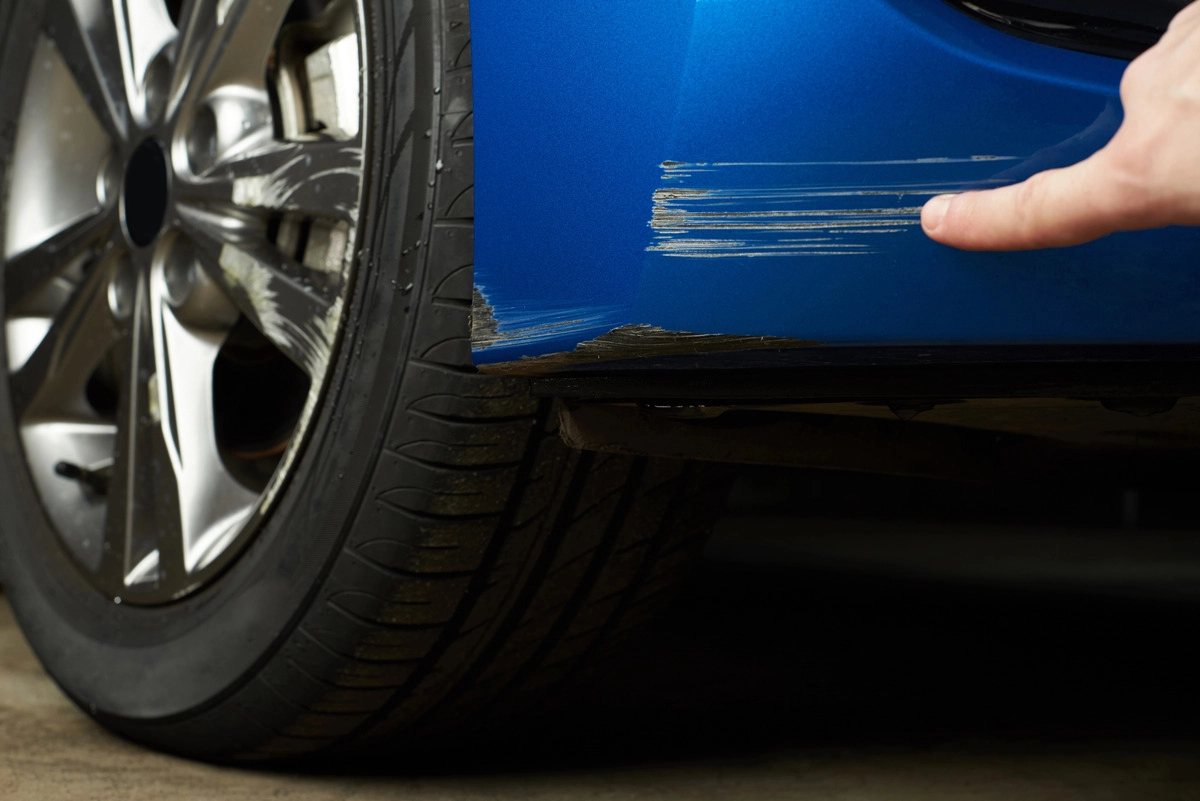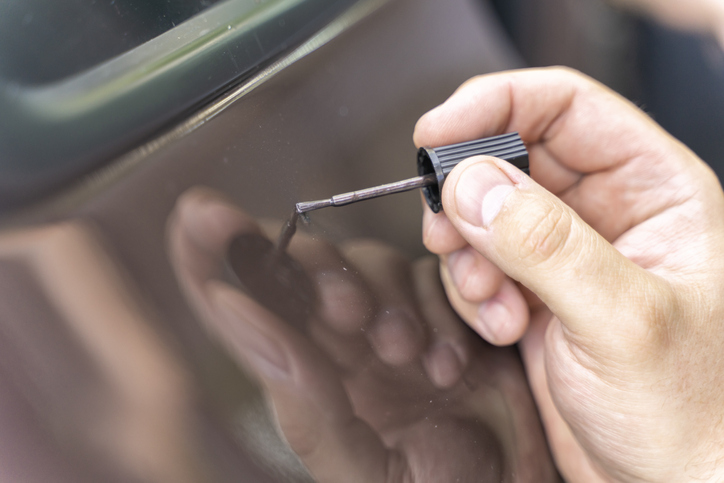5 ways your car paint gets damaged - and the best fixes
There are many ways your paintwork can get damaged. Here, we’re focusing specifically on incidents and accidents that create chips and scuffs in your lacquer, paint and primer - including when to panic and what to use to best fix them.

1. Washing your car
The up-and-over automatic car wash has a bad rep when it comes to damage it can cause to your paintwork.
Motorists have complained for years that the twirling brushes that spin into every nook and cranny of your bodywork leave swirl marks in the top coat - the lacquer.
Allegedly, modern and well-maintained automatic car washes are easier on paintwork these days. However, some car owners prefer a jet wash anyway.
This comes with its own risks - has that brush attachment touched the gritty floor? Will the force of the water damage your paint? Is the lance capable of scratching the paint?
For a relatively risk-free approach, experts recommend a bucket-and-cloth approach, with plenty of clean water on hand and good quality microfibre cloths and chammies.
Best fix
- Swirl marks, which are in fact tiny scratches, can be polished out using our Professional Scratch & Scuff Remover.
- If you’ve scratched the paintwork - with a piece of grit in your cloth or with a jet wash lance - this can easily be repaired with a car touch up pen.
- Order a car touch up paint pen or bottle in your car’s original colour using its registration number and follow our guide to using it.
2. Stone chips
Experts and petrolheads recommend a range of different methods to protect your car, including applying a protective film and waxing your car well.
However, it’s unlikely even the most diligent of motorists can get away from stone chips, especially if you drive on motorways.
At best, they’re unsightly and will bring down the value of your car if you want to resell it. At worst, they’ll penetrate through the layers of lacquer, car paint and primer to the metal and create a rust issue.
Best fix
- You can use a car touch up pen or bottle to fix a surface chip. We recommend touching up the lacquer too for a professional, longer-lasting job.
- If the stone has cut through to the metal, you’ll need to apply primer first. You can order a pen in your car’s original colour using its registration number and follow our guide to using it. Primer and lacquer are standard across all cars.
3. Bird droppings
Bird poop - also known as bird lime - are sticky and acidic - a perfect combination to mess up your paintwork.
Obviously, the best remedy for this is to clean the bird mess off your car as soon as possible - certainly before it hardens. The longer it’s on there, the longer the acid is eating through the layers of lacquer and paint. There’s a whole host of chemical and DIY options to choose from, but using water and car shampoo should work well enough.
Dried bird lime is difficult to remove and has already had a chance to start eating through the layers of lacquer and paint. There are some professional removers - including the all-purpose miracle WD40 - as well home-made recipes including bicarbonate of soda.
Some experts suggest soaking the dried matter under a cloth, then scraping - which might damage your paintwork. And when you do get it off, you might be left with a patch of faded colour if the acid has eaten through.
Whichever method of removal you choose, be as quick and as careful as you can and please follow instructions from a brand or expert you trust.
Best fix
- If damage has been done, it can be fixed. You could try polishing a minor mark out with our Professional Scratch & Scuff Remover.
- If the damage has penetrated through paint layers, you might have to sand the area down and use a touch up pen or bottle - see our guide.
- If the only damage is a scratch where you struggled to remove a particularly stubborn bit, you can use a car touch up pen or bottle to fix a surface chip. We recommend touching up the lacquer too for a professional, longer-lasting job.
4. Tree sap
The effects of tree sap on the look and integrity of your car’s paintwork are similar to that of bird droppings. It’s much more difficult to notice, being smaller and colourless.
Tree sap hardens in a few days, though this could happen faster if the sun’s out. Again, as with bird lime, there are specific cleaners and methods available to help you remove it, including scratching remnants off with your nail.
WD40 and surgical spirit are also recommended across the internet for removing tree sap. Please follow instructions from a brand or expert you trust.
If sap has been left for a very long time, it might have started to penetrate the layers of lacquer and paint, even the primer. Disappointing, but fixable.
Best fix
- You could try polishing a minor mark out with our Professional Scratch & Scuff Remover.
- If the damage is substantial, you might have to sand the area down and use a touch up pen or bottle - see our guide.
- If the only damage is a scratch where you struggled to remove it, you can use a car touch up pen or bottle to fix a surface chip. Touching up the lacquer too will give you a professional, longer-lasting finish.
5. Vandalism or accidental damage
From a key to a supermarket trolley, all of us at one time or another have come back to the car and discovered it’s got a mysterious scratch or scuff.
As with all paintwork damage, the important thing to assess is: has it gone through to the metal?
- If you can white on what is otherwise a metal panel, that’s the primer and a good sign that your bodywork is still protected against rust.
- If you can see metal, you need to act quickly. It takes very little time for oxidisation to kick in - this is what causes rust.
Best fix
- Any length of scratch is fixable with a touch-up pen, because you can tackle it with short, shallow
 strokes. And any depth of scratch is fixable with a touch-up pen, because you build the area up with thin layers.
strokes. And any depth of scratch is fixable with a touch-up pen, because you build the area up with thin layers. - If the damage is dented, you might require a bigger fix involving sandpaper and filler.
- You can use a car touch up pen or bottle to fix a surface chip. We recommend touching up the lacquer too for a professional, longer-lasting job.
- If the stone has cut through to the metal, you’ll need to apply primer first. You can order a pen in your car’s original colour using its registration number and follow our guide to using it. Primer and lacquer are standard across all cars.



